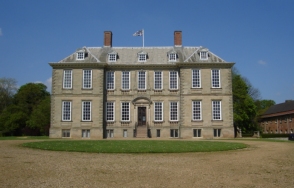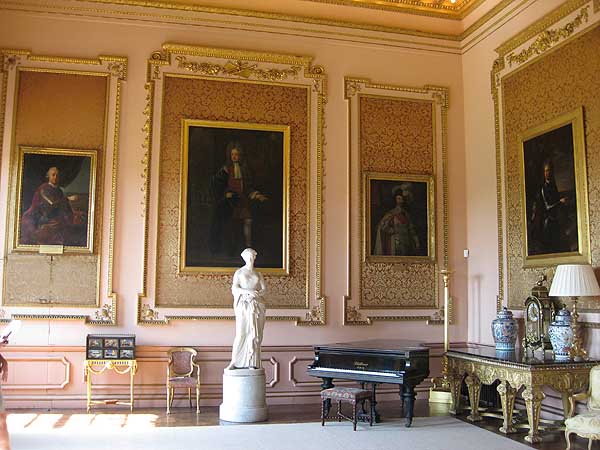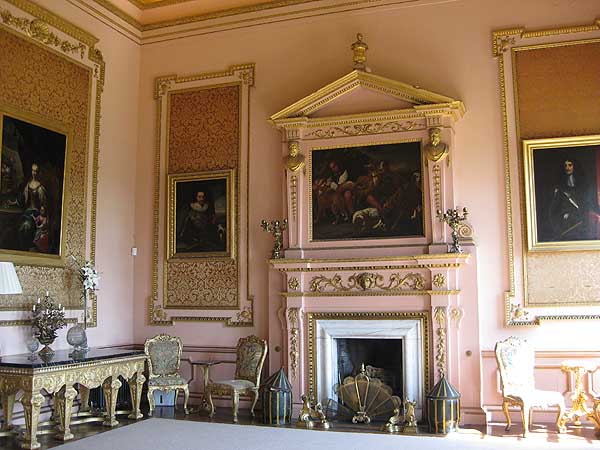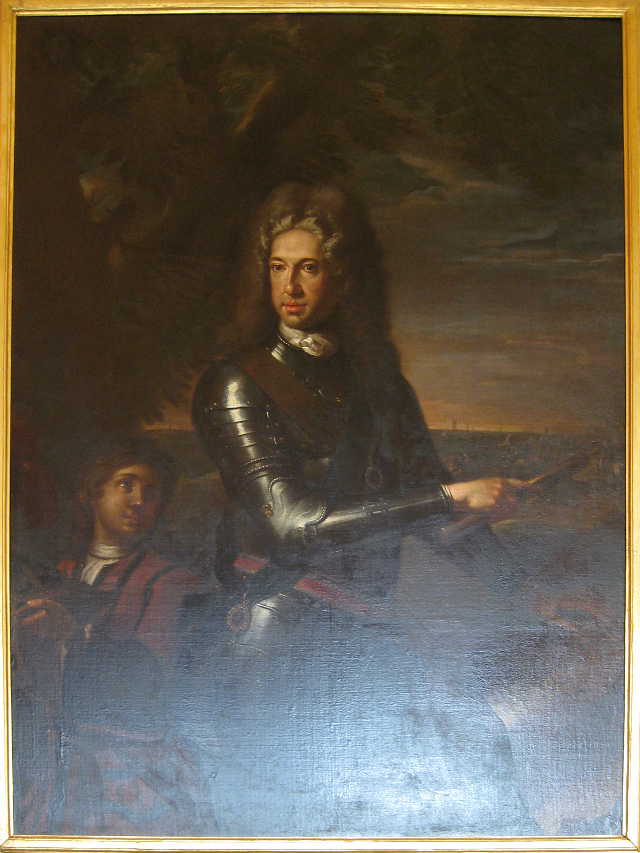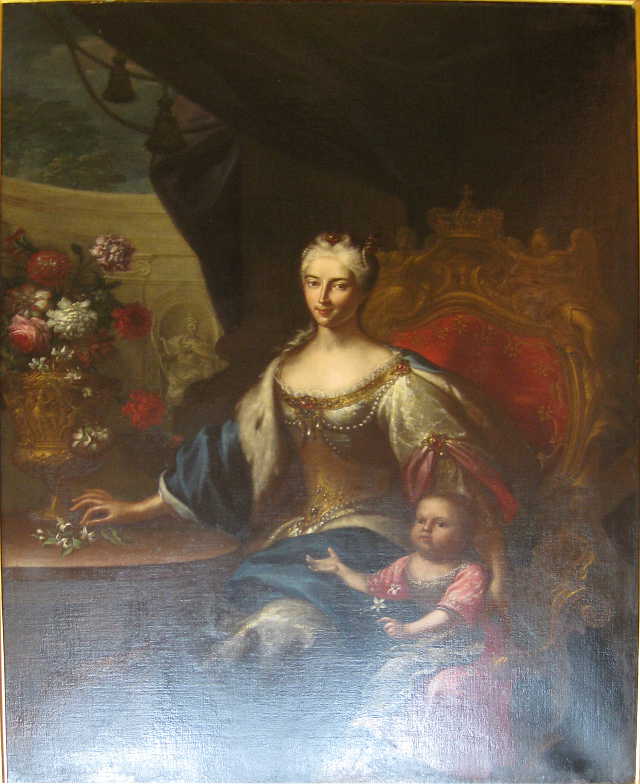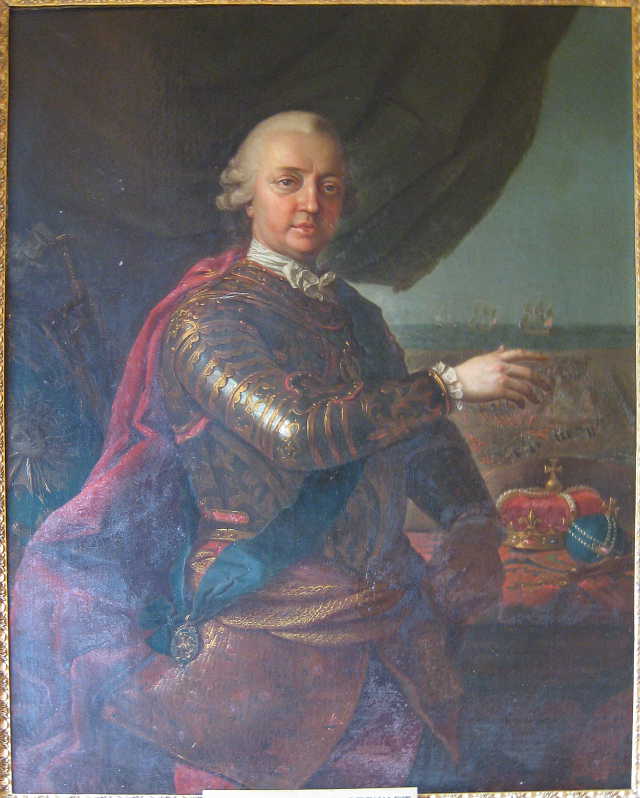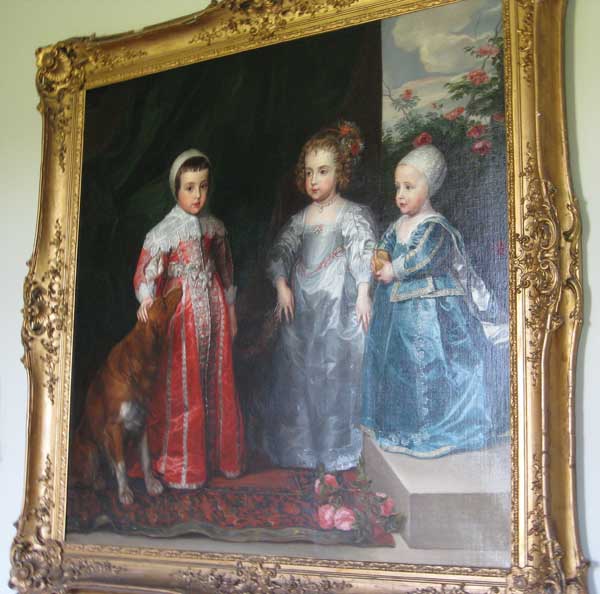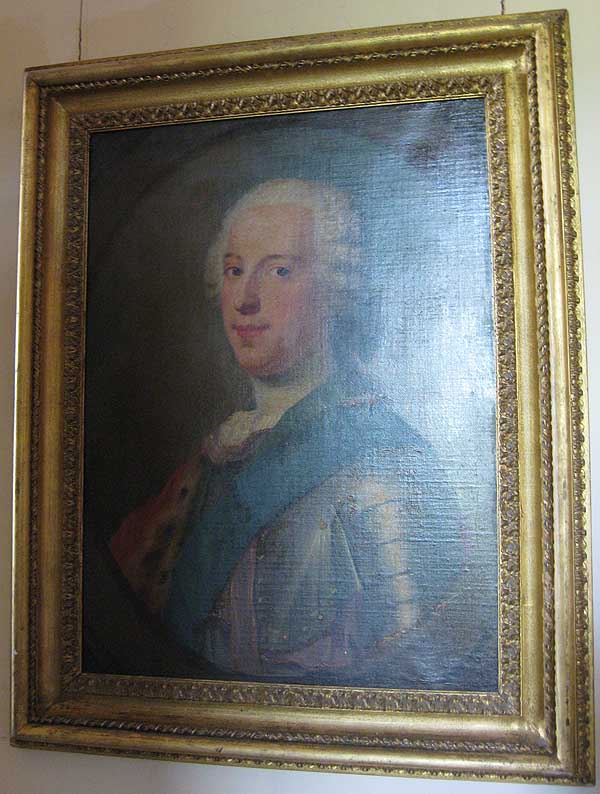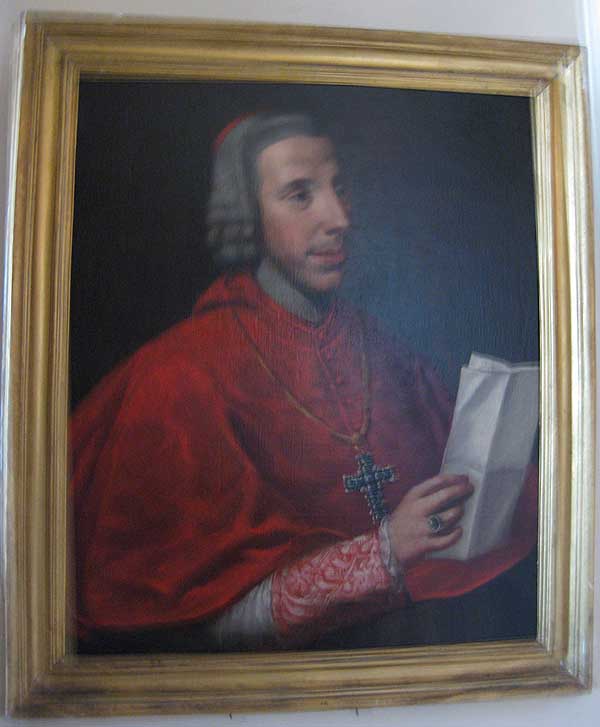 |
 |
 |
 |
 |
 |
 |
 |
 |
A Jacobite Gazetteer - EnglandStanford Hall |
Stanford Hall is located about 10 km northeast of Rugby in the Midlands. It was built in the 1690s as the seat of the Cave family. At the death of the last member of that family, Sarah Otway-Cave, in 1862, it was inherited by her descendants. In 1807, at the death of King Henry IX, Sarah Otway-Cave (called "Baroness Braye") acquired a number of Stuart portraits which had hung in Henry's palaces in Rome and Frascati. The most important paintings hang in the Ballroom or Great Hall. There are also several display cases in the room with Stuart mementoes. |
At one end of the long wall of the Great Hall facing the window wall hangs a 1721 portrait of King James III and VIII by Girolamo Pesci.1 James is shown standing three-quarter length. He wears armour with the blue sash of the Most Noble Order of the Garter with an attached Lesser George. Around his neck is the insignia of the Most Ancient and Most Noble Order of the Thistle. There is a map of the British Isles in his left hand and a marshall's baton in his right hand. At his right side is an unidentified page page holding a royal helmet decorated with crosses, fleurs-de-lis, and pearls. In the background are several ships with British flags before the white cliffs of Dover. Edward Corp describes the portrait as "not a good likeness".2 The painting hung for many years in the Palazzo Muti (now Palazzo Balestra). In 1723 Antonio David made a copy of the painting which is now at the Blairs Museum, Aberdeen.
At the other end of the long wall of the Great Hall facing the window wall hangs a portrait of James' wife Queen Maria Clementina with their elder son, Charles, Prince of Wales (later King Charles III).3 Maria Clementina is seated in a large red throne with a table at her right. She wears a gold bodice and a blue cape lined with ermine. Her right hand holds a bundle of five-petalled white flowers. The infant Charles holds a single blossom of the same flower in his left hand. On the table is a large Roman urn filled with flowers.
On the short wall near the window is a 1770 portrait of King Charles III by Laurent Pécheux.4
Among the other paintings in the room are portraits of King Charles I, King Charles II, and George Villiers, 1st Duke of Buckingham. In a case on the window wall are a number of Stuart relics. These include a small portrait of Queen Mary II and I; a rosary of Queen Mary II and I which later belonged to King Charles III; a small clock said to have been made by Edward East and given as a present by King Charles II at a tennis match; a miniature of King Charles III; a crucifix, card case, and pair of spectacles of King Henry IX. In the Grey Drawing Room is a copy of Anthony Van Dyck's group portrait of the three eldest children of King Charles I - Charles, Prince of Wales (later King Charles II), Mary (later Princess of Orange, and mother of the usurper), and James, Duke of York (later King James II and VII). the original portrait is now in the Galleria Sabauda in Turin.
In the Marble Passage there is a portrait of Henry, Duke of York (later King Henry IX. He wears a red mozetta and zuchetto. Around his neck he wears a pectoral cross and on his ring finger is an episcopal ring. In his right hand is a letter.
Notes 1 The painting measures 167.6 cm high and 116.8 cm wide. Pesci was born at Rome in 1679 and died in 1759. He was a student of Francesco Trevisani who painted several portraits of King James III and VIII and Queen Maria Clementina in 1719 and 1720. Cf. Robert Enggass, "Introducing Girolamo Pesci", The Burlington Magazine 118 (no. 880, July 1976): 491-501. 2Edward Corp, The King over the Water: Portraits of the Stuarts in Exile after 1689 (Edinburgh: Scottish National Portrait Gallery, 2001), 61. 3 The painting measures 167.6 cm high and 116.8 cm wide. 4Laurent Pécheux was born in 1729 and died in 1821. Image 2 (The Ballroom or Great Hall): © Noel S. McFerran 2009. Image 3 (The Ballroom or Great Hall): © Noel S. McFerran 2009. Image 4 (King James III and VIII, by Pesci): © Noel S. McFerran 2009. Image 5 (Queen Maria Clementina with Charles, Prince of Wales, by Pesci): © Noel S. McFerran 2009. Image 6 (King Charles III, by Pécheux): © Noel S. McFerran 2009. Image 7 (The Children of Charles I, by Van Dyck): © Noel S. McFerran 2009. Image 8 (Charles, Prince of Wales): © Noel S. McFerran 2009. Image 9 (Henry, Duke of York): © Noel S. McFerran 2009. This page is maintained by Noel S. McFerran (noel.mcferran@rogers.com) and was last updated July 3, 2017. © Noel S. McFerran 2012-2017. |
